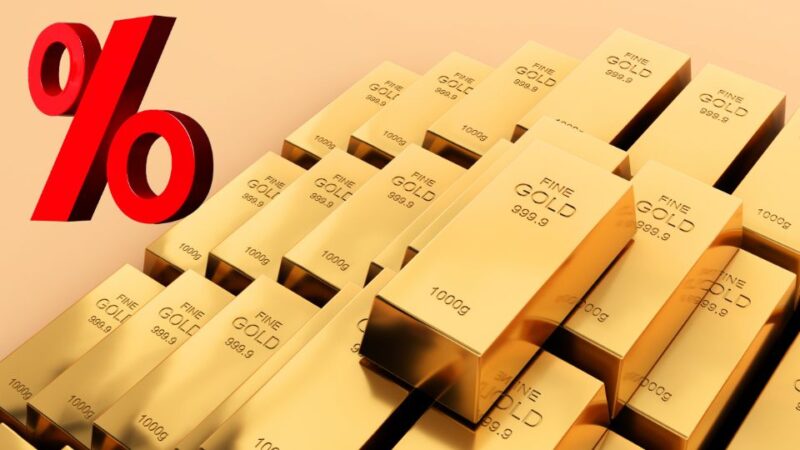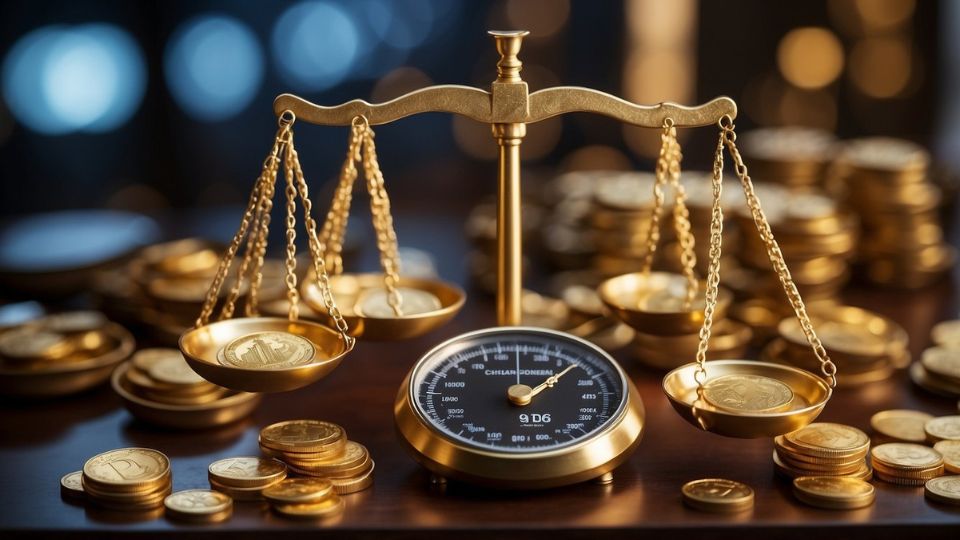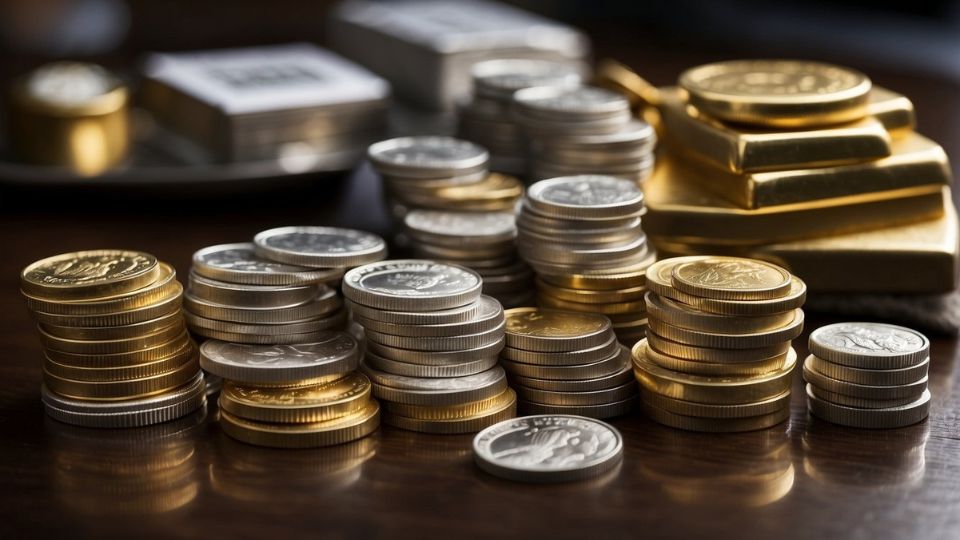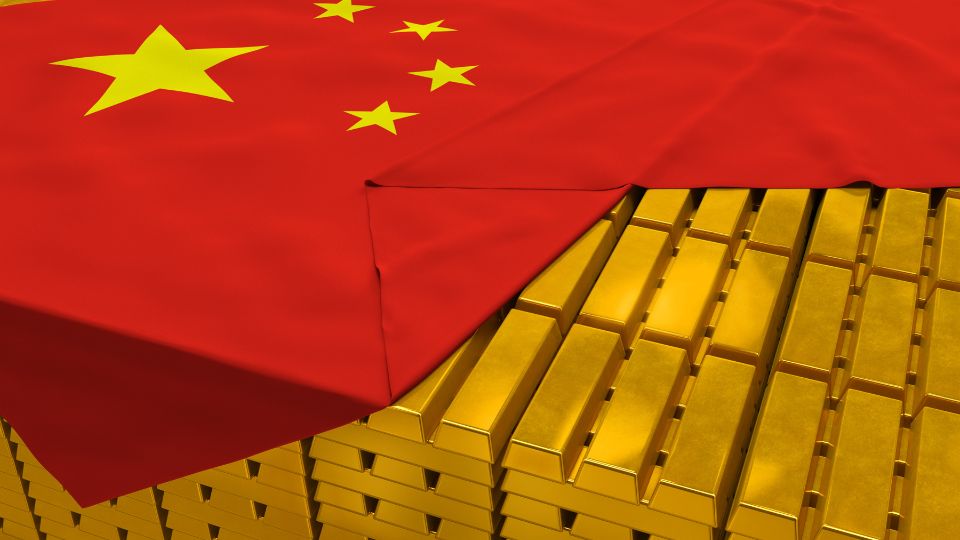The recent gold price surge has sparked interest across the financial world, coinciding with a significant drop in global interest rates. Investors are wondering whether this alignment of trends is a mere coincidence or part of a larger “perfect storm” in the financial markets.
With gold trading over $2,600 per ounce as of late September 2024, and U.S. Treasury yields dipping below 4%, the relationship between gold and interest rates is under the spotlight.
So what’s driving the gold price surge and how is this related, if at all, to the recent drop in interest rates?
What’s Fueling the Gold Price Surge?
As of late September 2024, gold has experienced a notable price increase, reaching $2,621 per ounce on September 23. Several factors are contributing to this gold price surge, including persistent economic uncertainty, inflationary concerns, and growing geopolitical tensions. Investors traditionally turn to gold in times of instability, seeking it as a safe-haven asset to hedge against risk.
According to Joseph Cavatoni, Chief Market Strategist at the World Gold Council, “Gold has always been a trusted refuge during periods of volatility and uncertainty. In this current climate of inflation concerns and economic slowdown, we’re seeing a renewed focus on gold as a hedge against risk.”
This renewed demand, alongside central banks purchasing gold to diversify their reserves away from the U.S. dollar, continues to drive the gold price surge.
Interest Rates Drop While Gold Prices Surge
One of the key contributors to the gold price surge is the simultaneous drop in interest rates. As of September 23, 2024, the 1-year U.S. Treasury rate stands at 3.91%, while the 30-year Treasury bond is yielding 4.09%. These rates have steadily declined as the Federal Reserve pivots toward a more dovish stance, balancing between supporting economic growth and controlling inflation.
On September 12, 2024, the Federal Reserve made a bold move by slashing interest rates by 50 basis points, aiming to counter slowing economic growth. This substantial rate cut, one of the largest in recent years, reflects the Fed’s urgent efforts to stimulate the economy amid rising uncertainty.
And let’s be honest—what’s another $35 trillion in debt between friends? With the Fed printing money like there’s no tomorrow, we might as well invest in something shiny, like gold, before inflation catches up with us.
Jerome Powell, Chair of the Federal Reserve, commented on the policy shift with the usual Fed speak: “We are carefully balancing the need to support economic growth while keeping inflation in check. Our decisions on interest rates are guided by the goal of maintaining stability in the broader economy.”
To be sure, this reduction in interest rates makes non-yielding assets like gold more appealing to investors, further fueling the ongoing gold price surge.
Related: Why the Psychology of Refinancing is Driving Homeowners to Act Now
Is There a Correlation Between Gold Prices and Interest Rates?
Historically, gold and interest rates have an inverse relationship. When interest rates are high, gold becomes less appealing because interest-bearing assets like bonds offer higher returns. Conversely, as interest rates fall, as they have recently, gold becomes a more attractive option. This is due to lower yields on bonds and savings accounts, reducing the opportunity cost of holding non-yielding assets like gold.
The current economic environment is a textbook case of this dynamic. As central banks in the U.S. and Europe lower rates to stave off economic downturns, the gold price surge has intensified, with investors reallocating funds into the safer asset.
What Does the Gold Price Surge Mean for Investors?
The combination of rising gold prices and falling interest rates presents both opportunities and risks for investors. Here are the key takeaways:
- Increased Demand for Safe-Haven Assets
With continued economic uncertainty and geopolitical risks, demand for gold is likely to remain strong. Investors are turning to gold as a hedge against inflation and recession risks. With interest rates remaining low, the gold price surge may continue in the short term. - Impact on Equity Markets
Lower interest rates typically boost equity markets by reducing borrowing costs for businesses. However, with investors shifting their focus from stocks to gold, market liquidity may decrease, leading to increased volatility in equity prices. As a result, investors may need to reassess their risk tolerance. - Pressure on the U.S. Dollar
Lower interest rates tend to weaken the U.S. dollar, making gold more attractive to international investors. As the dollar weakens, demand for gold could increase further, perpetuating the gold price surge.
Central Bank Policies in Focus
Central bank policies will continue to play a critical role in shaping both the future of gold prices and interest rates. Should inflation rise unexpectedly, central banks might be forced to hike rates again, which could temper the gold price surge. However, if economic growth remains weak, further rate cuts may drive gold prices even higher.
Jamie Dimon, CEO of JPMorgan Chase, recently expressed his concerns about the future of interest rates: “I’m a little skeptical that inflation will fall back to 2% as quickly as some predict” His statement reflects the uncertainty surrounding monetary policies and their potential impact on markets.
Navigating the Uncertainties
The ongoing gold price surge, coupled with falling interest rates, creates a unique financial environment. Gold remains a favored safe-haven asset, while traditional interest-bearing investments lose appeal in a low-rate environment. Investors should stay alert to potential shifts in central bank policies, as these decisions will likely shape the trajectory of both gold prices and interest rates in the coming months.
With the geopolitical situation rapidly deteriorating in the Middle East and the ongoing war in Ukraine, safe-haven assets like gold seem to be poised for massive price increases. This could be fueled even further by continuing reductions in interest rates to prop up the faltering US economy. Another uncertainty is the upcoming US elections and the effect it will have on either calming the waters or driving even more chaos in the global environment.
The recent gold price surge appears to have strong momentum. However, diversification still should remain as one of the most important pillars in navigating this ever-evolving financial landscape.





